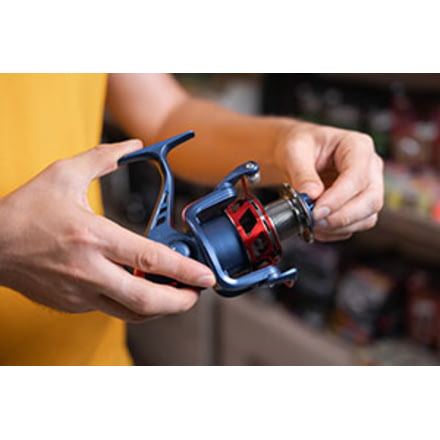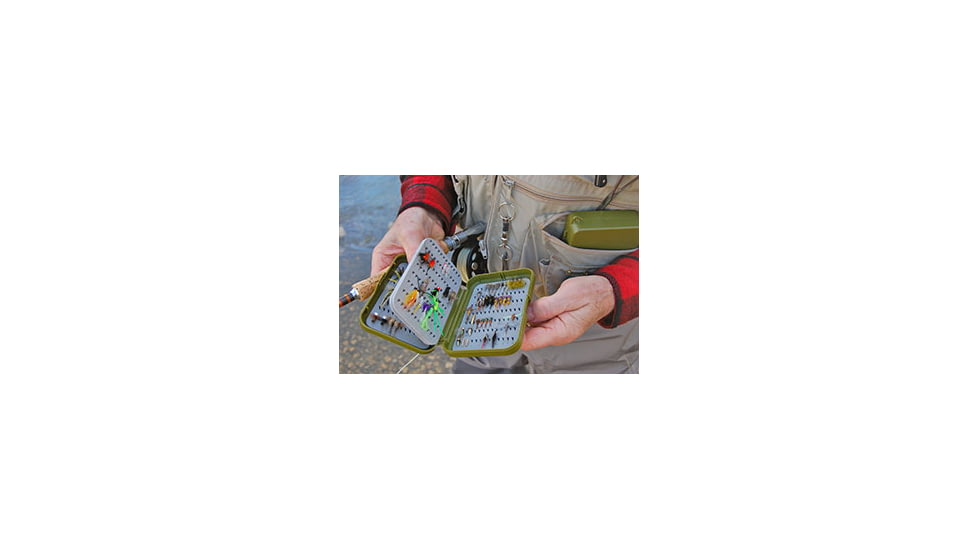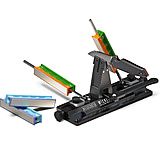What Is Fly Fishing?
While most images of fly fishing may call up images of calm misty mornings on rivers or lakes with little to no wake, fly fishing can be done in fresh and saltwater. Fly fishing is a type of fishing that uses a lightweight artificial fly lure. There are many flies; some look like natural invertebrates, baitfish, or other food organisms.![]()
Unlike other forms of fishing that are all about casting a lure, fly fishing is more about casting a fly line. The lightweight line and flies require casting techniques significantly different from other casting forms by using a fly rod, reel, and specialized weighted line.
What Do I Need to Fly Fish?
Fly Rods
Fly rods are thin, flexible fishing rods designed to cast an artificial fly. Typically, a monofilament segment called a "leader" is tied to the fly line on one end and the fly on the other. Modern fly rods are constructed from artificial composite materials, including fiberglass, carbon/graphite, or graphite/boron composites.
Fly rods come in various sizes from size #000 to #0 fly rods for the small freshwater trout and pan fish, up to and including #16 rods for large saltwater game fish. Each fly rod is sized to the fish, the wind and water conditions, and a particular line weight. The larger and heavier the fly line, the larger the flies to cast.
Fly rods have a line guide or a stripping guide, with snake guides spaced along the fly rod. These guides help control the movement of a thicker fly line. Most fly rods usually have little or no handle extending below the fishing reel to prevent interference with casting movements.
Fly Lines
A specialized weighted fishing line allows easy casting with a fly rod and interacts with the water by floating or sinking.
Fly Reels
A specialized type of fishing reel designed to hold fly lines and supply drag.
Flies
Artificial Flies
Fly fishing lures mimic the movements of aquatic insects, such as beetles, salmon flies, mayflies, and other water bugs. Artificial flies are constructed by tying fur, feathers, threads, and other materials on a fishing hook.
Nymphs
When fishing for trout, fly fishers need to pay attention to insect activity on top of the water or a bug hatch. If yes, dry fishing is your best option; if not, the trout will feed underwater, and fly fishers will use nymph lures or wet flies instead. Nymphs and wet flies imitate insects that are under the water. They are sometimes weighted and can be found in many different styles.
Is Fly Fishing Hard?
Fly fishing is not hard to learn; all you need to do is make sure that you pick up quality-made fly fishing gear from a reputable fly shop like CampSaver!
Fly Casting Methods
Roll Casting
Roll casting is an excellent fly fishing method when you don’t have a lot of space behind you to cast your fishing line. Anglers like to use this casting method when the wind comes from behind.
False Casting
False casting is when fly anglers cast a fly line in a back-and-forth motion; however, the fly line never touches the water. So what's the point of that? False casting allows you to cast your fly line further by building momentum within the fly rod. With each false cast, the velocity increases the distance until the fly angler has cast the desired space. False casting can also be used to remove moisture from a dry fly to make it more boient.
Dry Fly Fishing
Dry fly fishing is a forward casting angling method where the artificial fly floats on the surface of a body of water. The Flyfisher casts by mimicking the downstream drifting of a real fly on the water's surface. This is a casting method that does require practice beforehand to get the hang of it.
Fly Fishing vs. Spin Fishing
Fly fishing has long been considered a more peaceful form of fishing while still being a challenge by imitating insects. Even before you get on the water, there is an art form to fly tying with fur, feathers, etc.
Spin fishing is more about action, excitement, and catching as many fish and as many different fish species as possible. Spinnerbaits, crankbaits, and other resistance lures with spinning rods are an edge that spin fishing has over fly fishing any day.
However, the type of fishing you may decide to try depends on what type of body of water you're fishing in and what kind of fishing species are available. There will never be a definitive winner in the debate of which type of fishing is better because it comes down to the angler's personal preference and skill set.
What Is Spin Fishing?
Spin fishing is an angling technique that uses a fishing lure called a spinnerbait and spinning rod. Spinnerbait lures have a rotating blade that agitates the water and attracts fish. Anglers can spin fish in both fresh and saltwater.
What Is a Spinning Reel Good For?
Spinning reels can be used for saltwater and freshwater. A spinning reel allows you to be further away from the fish so as not to scare them away. When casting long distances, spinning reels can handle extra-large stick baits, poppers, and live and flesh baits.
Shop Fishing Gear at CampSaver!
When it comes to the argument of fly fishing vs. spin fishing, the answer boils down to personal preference. There are plenty of fishing techniques, and we’ve only scratched the surface. However, whether your goal is to catch a lot of fish or to have a relaxing day fishing, CampSaver is your number one spot for all fishing gear! We are always updating our product lines to provide you with the best fishing supplies; the only thing we don’t carry is live bait! Our team of experts is always coming out with new articles, too!Fl

























